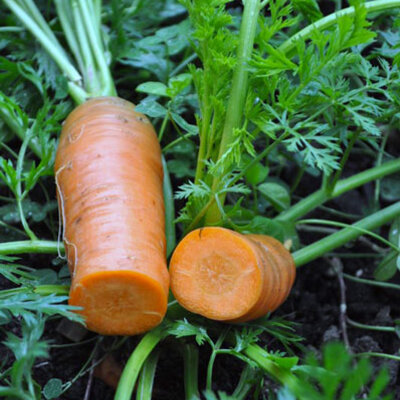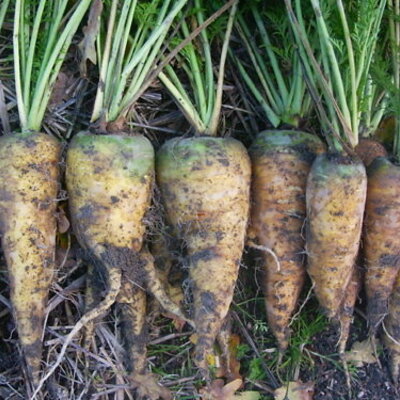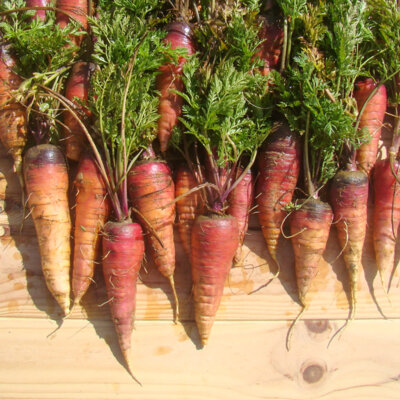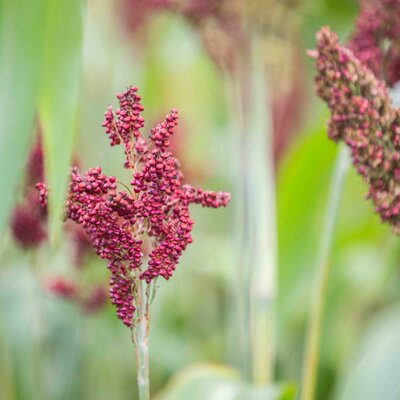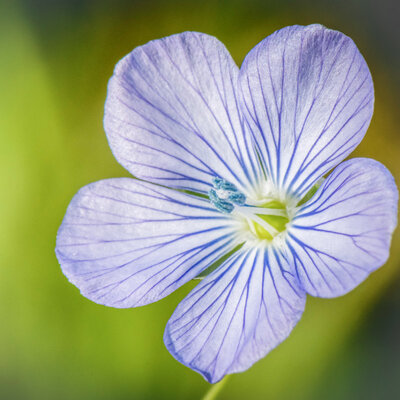
Flax
This fast-growing flax plant produces a multitude of small, delicate blue flowers. An excellent green manure, it is also cultivated for its fiber (fabric, insulation material, etc.) and its oil seeds, which are used as a condiment or oil.
In association with potato plants, tomatoes or eggplants, cultivated blue flax is an excellent beetle repellent.
Characteristics of cultivated blue flax
Cultivated blue flax, Linum usitatissimum, is a very old annual species. For thousands of years, the peoples of Central Asia, the Egyptians, the Greeks and the Gauls have fostered the development of a species of flax called usitatissimum. The first fiber, 36,000 years old, was found in the Dzudzuana cave in Georgia.
This slender-stemmed plant grows from 80 to 120 cm tall. It has elegant, light-blue edible flowers, 2 to 3 cm in diameter, with 5 funnel-shaped petals. After fertilization, each of these delicate, short-lived flowers gives way to a capsule containing 2 seeds.
Flax is undemanding and fast-growing, and is often grown as a spring green manure. Thanks to its dense root system, it improves soil structure and decompacts heavy soils. Its carbon-rich stalks make excellent mulch.
Combined with cosmos and nigella flowers, this blue flax makes an attractive addition to vegetable and flower gardens. It can also be enjoyed in pots and window boxes on balconies and terraces.
When to sow blue flax?
Used as a green manure, flax is generally sown from March to July after the last spring frosts. Flowers appear 2 to 2.5 months after sowing. Mow the flax before it goes to seed, leave it on the ground as a mulch, then bury it 3 weeks later for subsequent crops.
This annual plant thrives in sunny to semi-shaded conditions, with moist, draining soil. It can also be grown in pots.
Sow flax seeds directly on the ground, on a previously weeded and surface-scratched surface, at a rate of 5 to 10 grams per square metre. Place the seeds in contact with the soil using a board. The taproots of blue flax can penetrate to a depth of 1 m and loosen the soil in the garden. In addition, this excellent companion plant keeps insect pests (such as Colorado beetles) away from other tomato , eggplant and potato crops.
Blue flax resprouts readily and can be very prolific. Mow the flowers before they go to seed to prevent their spread.
When to harvest flax seed
From July onwards, as soon as the plants turn brown and the capsules emit a dry, jerky sound when shaken, blue flax seeds can be harvested. Cut off whole plants and leave to dry out completely in a sheltered spot. Remove the capsules from the stems and rub them between your hands to extract the seeds. Sort seeds from plant debris using a sieve or by winnowing.
What are the benefits of flaxseed?
Within the Linaceae family, cultivated linseed - Linum usitatissimum - is useful in the vegetable and flower garden, but not only. While these plants make excellent green fertilizer for other crops, flaxseed has numerous medicinal virtues, known for thousands of years. The food, cosmetics and pharmaceutical industries all love these oil-rich seeds. A source of omega-3 and omega-6, they relieve constipation, excess cholesterol and menopausal disorders. Flax fibers are also used in fabrics, ropes and insulating building materials.
in the ground, on the fly
Used as a green manure, flax is generally sown after the last spring frosts. Sow directly in place, on weeded, surface-scraped soil, either broadcast or in rows 3 cm apart, at a rate of 5 to 10 g/m2. Press lightly to bring the seeds into contact with the soil.
Mow the flax before it goes to seed, leave it on the ground as a mulch, then bury it 3 weeks later for subsequent crops.
March, April, May, June, July
June, July, August, September
in the ground
sunny
medium
humus, sandy
drained
Linum usitatissimum
mid-season
70 grams
Blue
From 80 to 120 cm
Eurasia
For thousands of years, the peoples of Central Asia, the Egyptians, the Greeks and the Gauls have fostered the development of a species known as "usitatissimum". The world's oldest fibre is flax found in the Dzudzuana cave in Georgia, dating back 36,000 years. This cultivated flax (Linum usitatissimum L.), very different from its ancestors, is an annual species.
Flax seeds are processed to produce oil, also used by the ink and paint industry, rich in omega 3.



